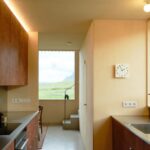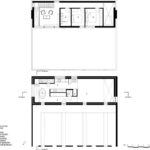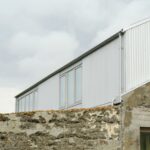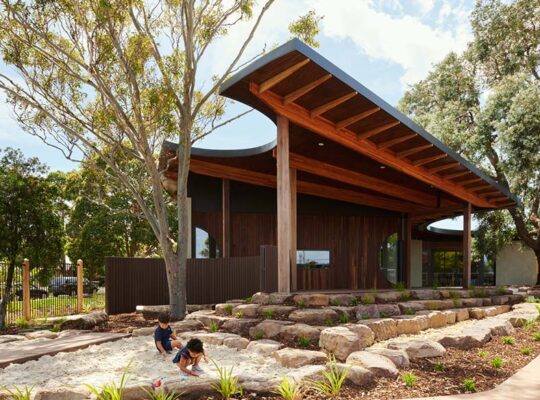Studio Bua has undertaken the remarkable task of converting a neglected concrete barn in rural Iceland into a multifunctional space serving as both a home and an artist’s studio. Situated in Hlöðuberg, Skarðsströnd, overlooking the Breiðafjörður in western Iceland, the barn occupies a picturesque rural site surrounded by mountains, meadows, a fjord, and the sea, offering breathtaking views but also subjecting the structure to extreme weather conditions.

Concept and Balance:
The primary challenge was to strike a balance between creating a functional workspace for the artists and providing a comfortable family home. Studio Bua aimed to preserve the barn’s unique character while ensuring it could serve as an exhibition space for artwork, a welcoming family abode, and an entertainment venue for guests.
Preservation and Integration:
Efforts were made to retain as much of the existing concrete structure as possible, including the thick mass concrete walls and the corrugated steel roof. The exterior retains the original concrete’s unique texture and appearance, with lichen growth and local pebble aggregate lending it a natural aesthetic. The addition of a lean-to creates a sheltered courtyard, while ruined perimeter walls enclose a new walled garden.

Sustainable Design:
Incorporating elements of the local landscape, such as pebbles and volcanic sand, the renovation embraces sustainability. A lightweight timber structure was inserted into the existing space, clad in industrial Aluzinc, a material chosen for its durability in harsh environments. Local sourcing of materials and installation of energy-efficient features like ground source heat pumps and triple glazing ensure sustainability despite the challenging conditions.


Interior Harmony:
The interior design reflects the tranquility of the surrounding nature, with a neutral palette inspired by the landscape. Sophisticated yet understated, the interior provides a serene backdrop for showcasing artwork without overshadowing it. The space exudes calmness and control, offering a stark contrast to the rugged beauty of the outdoors.

Conclusion:
Through meticulous preservation, innovative integration, and sustainable design practices, Studio Bua has transformed the Hlöðuberg barn into a harmonious blend of artistry, functionality, and environmental consciousness. The result is not just a home and studio but a testament to the power of adaptive reuse and thoughtful design in rural landscapes.





















